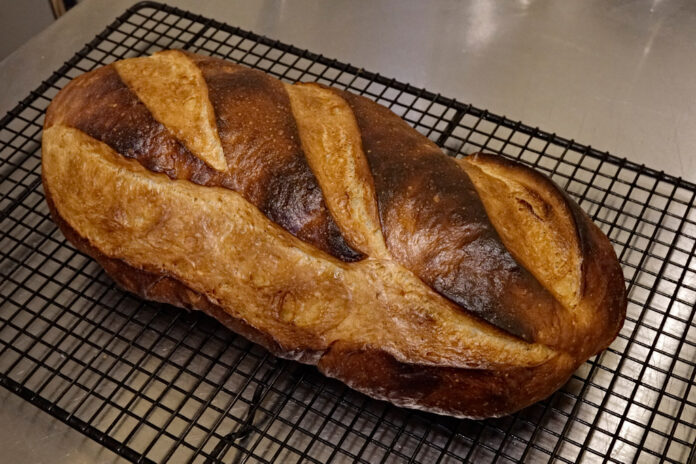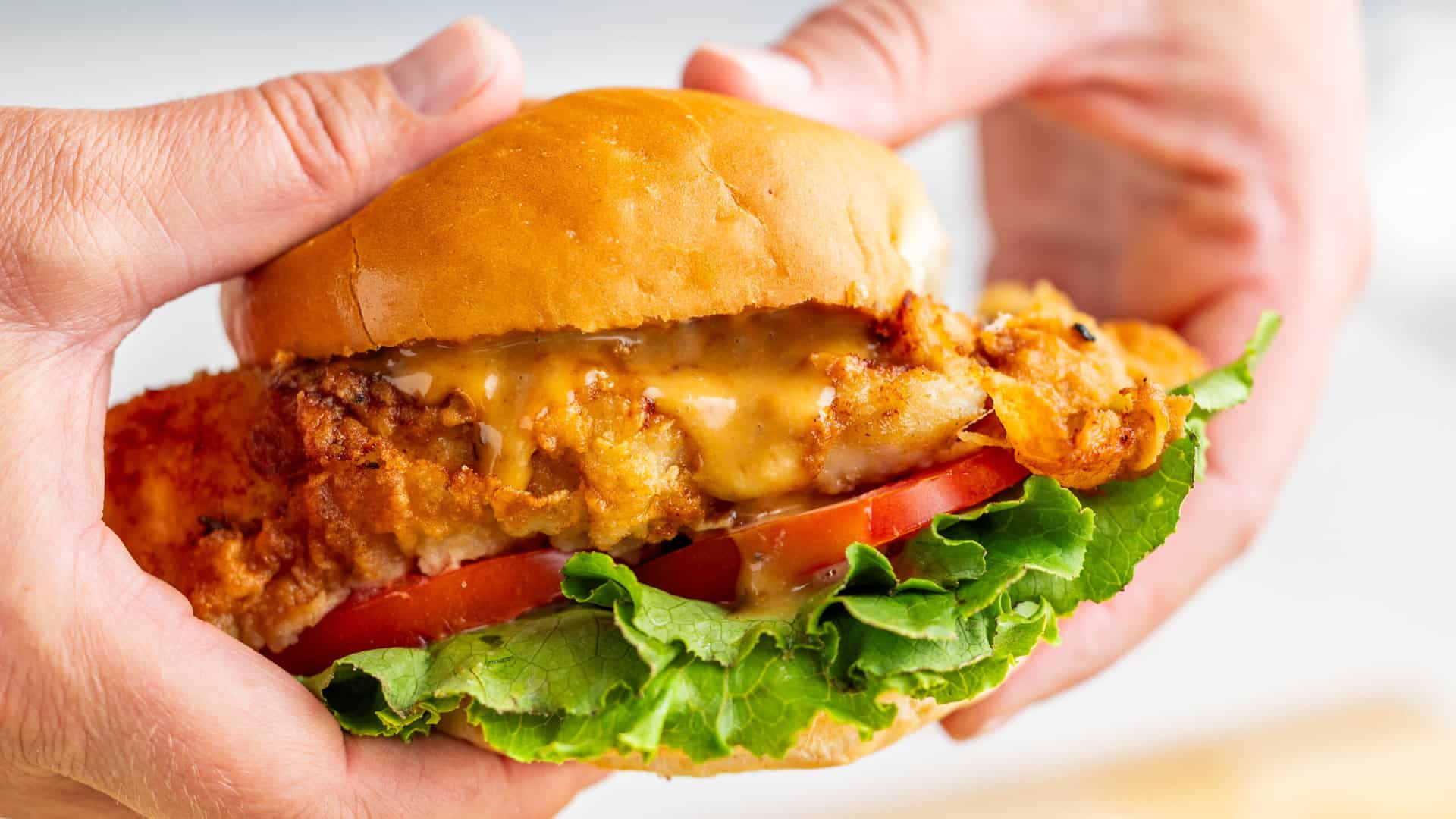After some dialogue in latest threads, I made a decision that it is excessive time I attempted out shorter bulk ferments. My guideline has been that the longer the flour is hydrated, and the longer it is fermented, the higher the flavour. So I normally let bulk ferment go on to greater than double, generally triple, the unique dimension. This normally provides me a high-quality, pretty uniform crumb, which can have massive pores or smaller ones relying on hydration, grains, all these types of issues.
This apply has served me properly, and I like that sort of crumb, however I have been to see how a shorter bulk ferment may change issues. Some folks solely let the dough rise by 1/2 or 1/3, for instance. This bake is my first experiment. As a bonus, I measured the pH with my new Hanna meter.
Here is the crumb shot, then the small print:
You’ll be able to see that there’s a big selection of pore and cavity sizes, and within the bigger ones you possibly can see some good gelatization. The crust is attractive, and the peak and oven spring have been wonderful. The crumb is properly open for a 72% hydration loaf. I am very joyful general.
This loaf makes use of largely all-purpose flour together with some malted barley and Irish-style entire wheat flours. This made for a smooth crumb. It is likely to be slightly too smooth for the crust, which is skinny, flakey, and slightly crunchy.
Components (flour and water are totals together with starter’s flour and water) *
=======
10% – malted stone floor barley flour
10% – KA Irish-style entire wheat flour
80% – Gold Medal All Function Unbleached
72% – water
20% – starter (100% hydration, made with bread flour)
2.2% – salt
* Whole flour was 400g.
Course of
=======
8:30 AM – Tough mixture of all components
9:00 – knead and stretch
9:55 – 1st S&F, between moist palms
10:45 – 2nd S&F, between moist palms
12:05 – third S&F, on bench with slightly flour
1:30 PM – 4th S&F, on bench
3:30 – form loaf, proof freestanding coated with plastic wrap**
4:55 – bake
** Dough had risen by roughly 50%, in contrast with my traditional 2.5X – 3X.
After the third S&F the dough felt splendidly silky, and was very extensible. I made a decision to do a remaining S&F to scale back this extensibility.
Bake Profile
=============
– Preheat oven with baking metal to 450 °F
– Uncover loaf final quarter-hour
– Slash, insert into oven
– Throw 12 oz faucet water on steam tray, block vent for 1 minute***
– Flip temp to 300 °F for quarter-hour
– Flip temp to 425 °F
– Whole bake time: 40 minutes.
*** The oven leaks steam so quick that hardly any is visibly popping out of the vent after a minute.
Here’s a graph of the pH vs time. Do not pay any consideration to the primary level trying decrease than the second. I simply did not write down the second digit of the studying, which I did for all of the others. I am certain the primary level was the identical as the second.
Oh, sure, the style is wealthy, mellow, a bit buttery. All in all, a profitable experiment, I might say.







